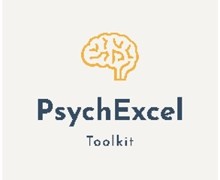Towards a positive education pedagogy
Back
The goal of positive education is to promote flourishing within the school community, aiming to marry up best-practice teaching with research on the science of wellbeing. Despite only being a decade old as a defined approach, there is already a plethora of research detailing the benefits of positive education approaches in schools. These include increases in student attainment, behaviour, and mental health. It is widely recognised that to successfully build flourishing school communities, an embedded approach throughout a school is required. It is something that I have been working towards in my teaching for three years, encouraging a shift in classroom culture to create a balance between teaching skills for good wellbeing and high academic achievement. It is not rocket science after all that happy students learn better and happy teachers stay in the profession for longer.
Having developed an interest in this area, I have trained as a positive psychology consultant offering training to staff and students in school and colleges. I am a strong believer that positive education pedagogy should be a vital part of students’ school and college experiences. Having brought it to my classrooms, I enjoy my job as a teacher much more, and feel less stressed and more connected with my students, demonstrating that the benefits extend to teachers as well as pupils. With a predicted increase in student mental health issues on the horizon (accelerated by the pandemic), teachers are well-placed to encourage student flourishing through their teaching, making it a part of both the explicit and implicit curriculum. The recent government focus on school wellbeing provides a much-needed opportunity to do this, and in my experience as a teacher, it can be done with ease and relatively little effort.
The explicit curriculum: The Positive Psychology Toolkit
One strategy I have used in my own teaching is the development of a “psychology toolkit”. I created micro workshops combining metacognition, exam skill advice and wellbeing strategies for sixth-form aged students. The workshops provide them with short sessions of psychoeducation, paired with practical strategies which encourage academic and emotional resilience. Developed over the course of three years, the positive education toolkit now consists of workshops covering a wide range of topics, including the following:
|
Wellbeing topics |
Exam skill and metacognition topics |
|
Character strengths
|
Strategies for revision |
|
Planning and decisionmaking for the future |
Metacognition and academic resilience |
|
Emotional literacy and agility |
Exam technique skills |
|
Stress management |
Making sense of the mark scheme |
|
Kindness, Gratitude, Self-compassion |
Planning and goal setting |
I initially used these workshops as a micro-curriculum, which ran alongside my regular teaching. Since the workshops are only 20-30 minutes long this seemed manageable, and I gave the students slightly more independent work to do to offset the time taken. However, the prescriptive nature of timetabling the workshops into my scheme of work didn’t always suit what the students needed, and they quickly picked up on this mismatch and tuned out. I realised that simply teaching the students about wellbeing and academic resilience was not going to cut it; I needed to tailor my workshops to suit the students’ current experiences and feelings. Now, I dip in and out of these workshops when the opportune moment arises. For example, if the students are telling me they feel overwhelmed, I will deliver a workshop which helps the students to cope with emotions and stress, or I use the goal setting workshop to help them break down goals, plan revision and stick to their targets. Some classes need it, and some don’t, so I am careful to listen to what they need and tailor what I offer to the class. I also try my best to make the sessions relatable and fun. The students have access to the materials via an online platform and have copies of the resources to keep. Since I started this approach, the response from the students has been positive and it has been lovely to receive feedback about how useful students have found a particular workshop after it has been delivered. In my view, using the toolkit has brought the language of positive education and wellbeing into my classroom and normalised it. The students accept that this is part of their Psychology class experience, despite it not being part of their academic syllabus, and I really enjoy teaching it.
The implicit curriculum, adopting a positive education lens
There has been interest in the toolkit sessions from other teachers, who have used some of the resources. I am always happy when another teacher takes an interest in positive education, and I love to swap and share ideas. However, it is important for teachers to find their own positive education path. I have learned that the use and delivery of positive education is not a one size fits all practice, and teachers must utilise their own teaching styles, considering what is delivered to students, and how it is done. Each teacher will possess unique skills and perspectives which can guide how positive education can be brought into their teaching. For example, a chemistry teacher may discuss the chemical reactions of the stress response and use this to facilitate a discussion about positive coping; a biology teacher can explore physiological responses to emotions and develop emotional literacy in students; and a health and social care teacher may find opportune moments to talk about self-compassion, compassion fatigue, and the importance of self-care. I encourage teachers to find their own ways of normalising wellbeing-related topics in their classrooms, turning up the visibility through their own experiences and styles of teaching. This is essential in creating a cultural shift towards a positive education pedagogy in schools which plays to everyone’s strengths. I have found my pathway though the use of the toolkit and facilitating wellbeing discussions when the curriculum provides an opportunity for me to do so. What works for me will need tweaking for others. The content of positive education pedagogy and the context in which it occurs matter, and whole-school approaches are challenged with finding the delicate balance between explicit teaching of wellbeing, and the implicit skill of embedding it into current curriculum content.
I have been asked if there is evidence to demonstrate the success of a positive education approach to teaching. Has it improved my results? Has it increased the wellbeing of my students? Since I have not taken any formal measures to assess the approach yet, it is hard to say. I may do this in the future; however, I don’t necessarily feel that it is needed. As a result of using positive psychology over the past few years, I am a happier, less stressed-out teacher. The students that I teach respond well to the approach, feel supported, and are achieving well, and for me this is sufficient as evidence of its success.
If you would like to find out more about using a positive education approach in your school or college, please do not hesitate to get in touch.
Hannah Dunn is a teacher of psychology at Scarborough Sixth Form College, a CPD trainer, a Positive Education Consultant, and an Edexcel Psychology Tutor.



